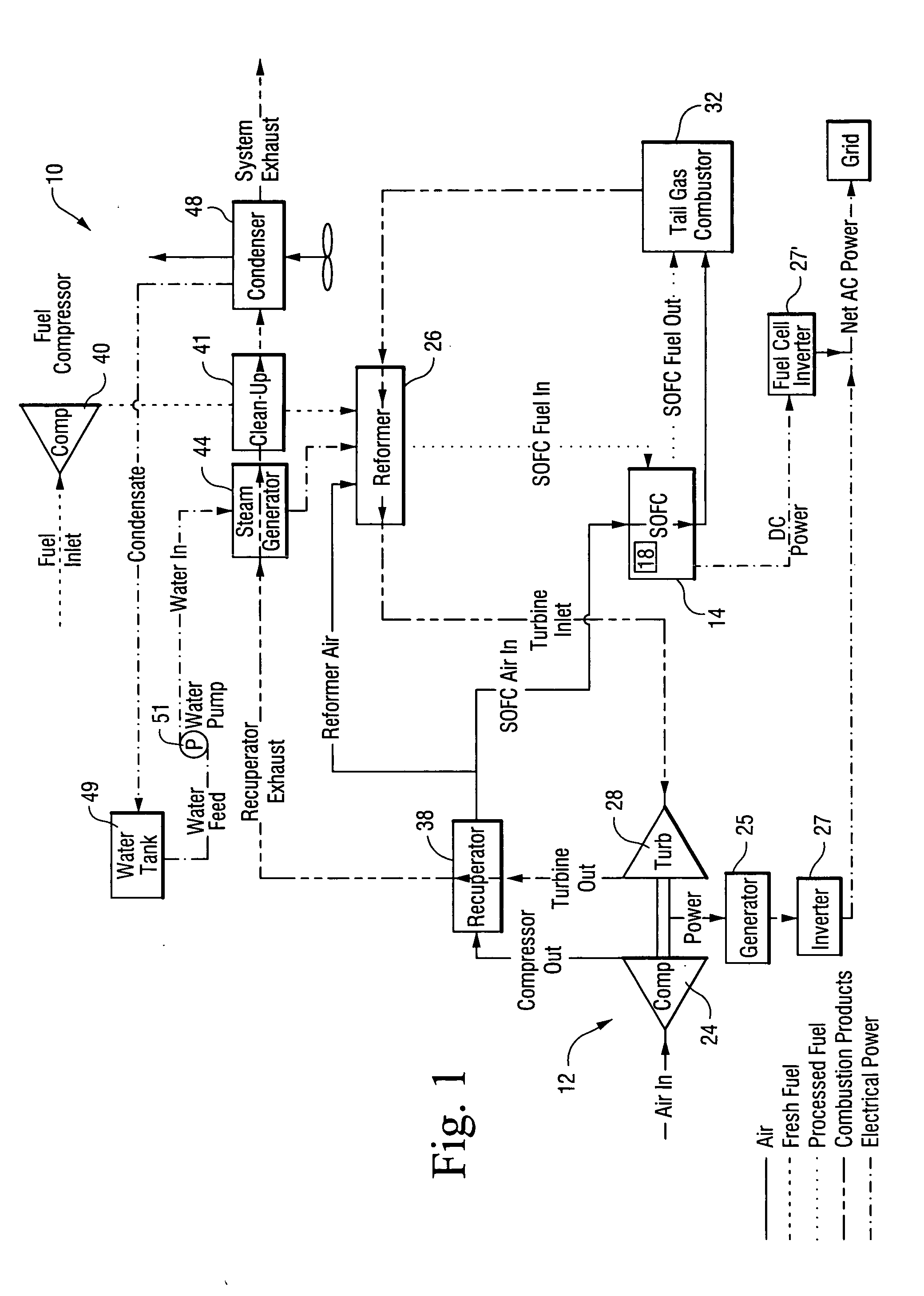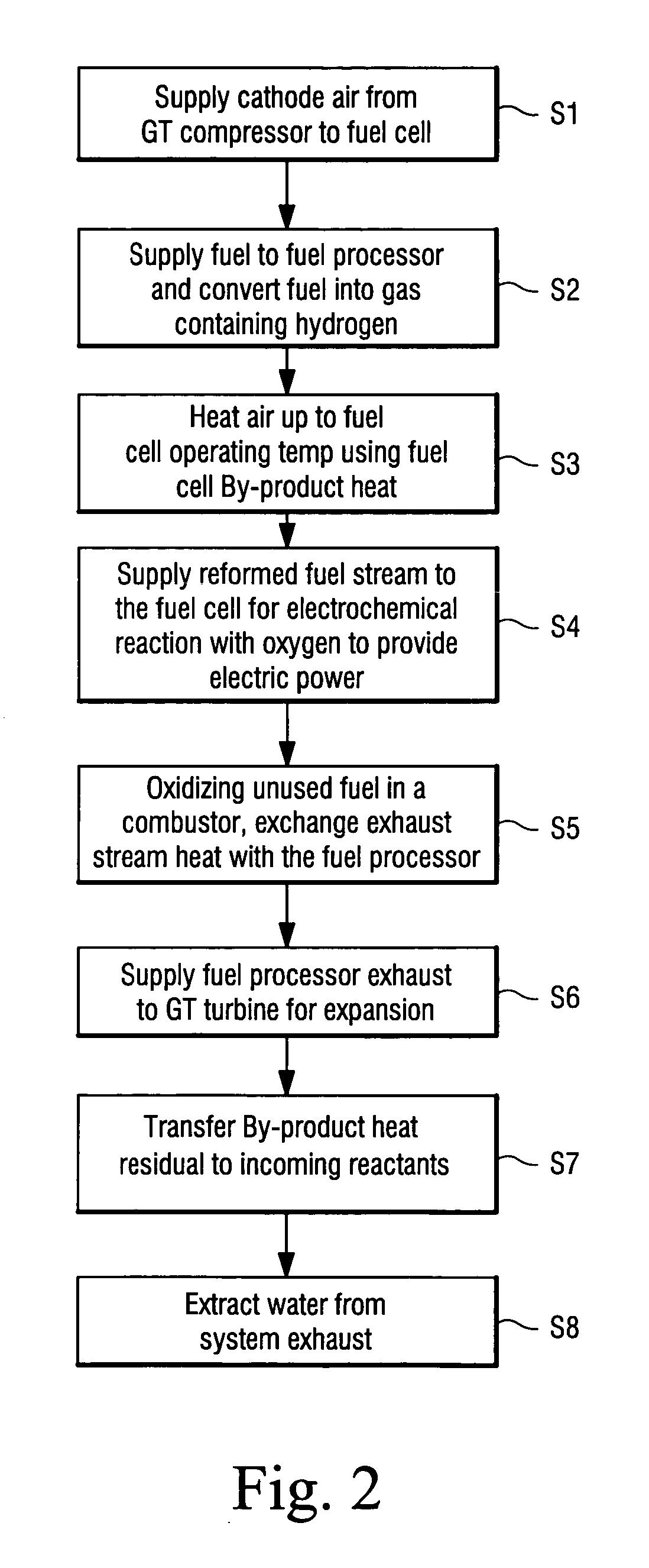Pressurized near-isothermal fuel cell - gas turbine hybrid system
a gas turbine hybrid and near-isothermal technology, applied in the field of hybrid systems, can solve the problems of affecting the structural integrity and reliability of the stack, the inability of the sofc stack to withstand a large thermal gradient or temperature rise, and the high airflow ra
- Summary
- Abstract
- Description
- Claims
- Application Information
AI Technical Summary
Benefits of technology
Problems solved by technology
Method used
Image
Examples
Embodiment Construction
[0012] The system 10 will be described with reference to FIG. 1. Generally, the hybrid system 10 includes a turbine component 12 and a fuel cell component. The fuel cell component includes a fuel cell 14 having a plurality of power-producing electrode-electrolyte assemblies, flow distribution assemblies, and heat-conducting elements 18, such as heat pipes, which may or may not be connected to the flow distribution assemblies. As an alternative to heat pipes, high thermal conductance members may be used. The heat-conducting elements 18 have a high thermal conductance, which allows for an efficient transfer of fuel cell by-product heat to incoming reactants. The high thermal conductivity of the elements 18 allows for very small temperature gradients in the fuel cell, thus making the fuel cell nearly isothermal. In addition, the heat-conducting elements are typically good electrical current conductors and may serve as the fuel cell's interconnects that serve the purpose of transferring...
PUM
| Property | Measurement | Unit |
|---|---|---|
| temperature | aaaaa | aaaaa |
| temperature | aaaaa | aaaaa |
| temperature | aaaaa | aaaaa |
Abstract
Description
Claims
Application Information
 Login to View More
Login to View More - R&D
- Intellectual Property
- Life Sciences
- Materials
- Tech Scout
- Unparalleled Data Quality
- Higher Quality Content
- 60% Fewer Hallucinations
Browse by: Latest US Patents, China's latest patents, Technical Efficacy Thesaurus, Application Domain, Technology Topic, Popular Technical Reports.
© 2025 PatSnap. All rights reserved.Legal|Privacy policy|Modern Slavery Act Transparency Statement|Sitemap|About US| Contact US: help@patsnap.com



